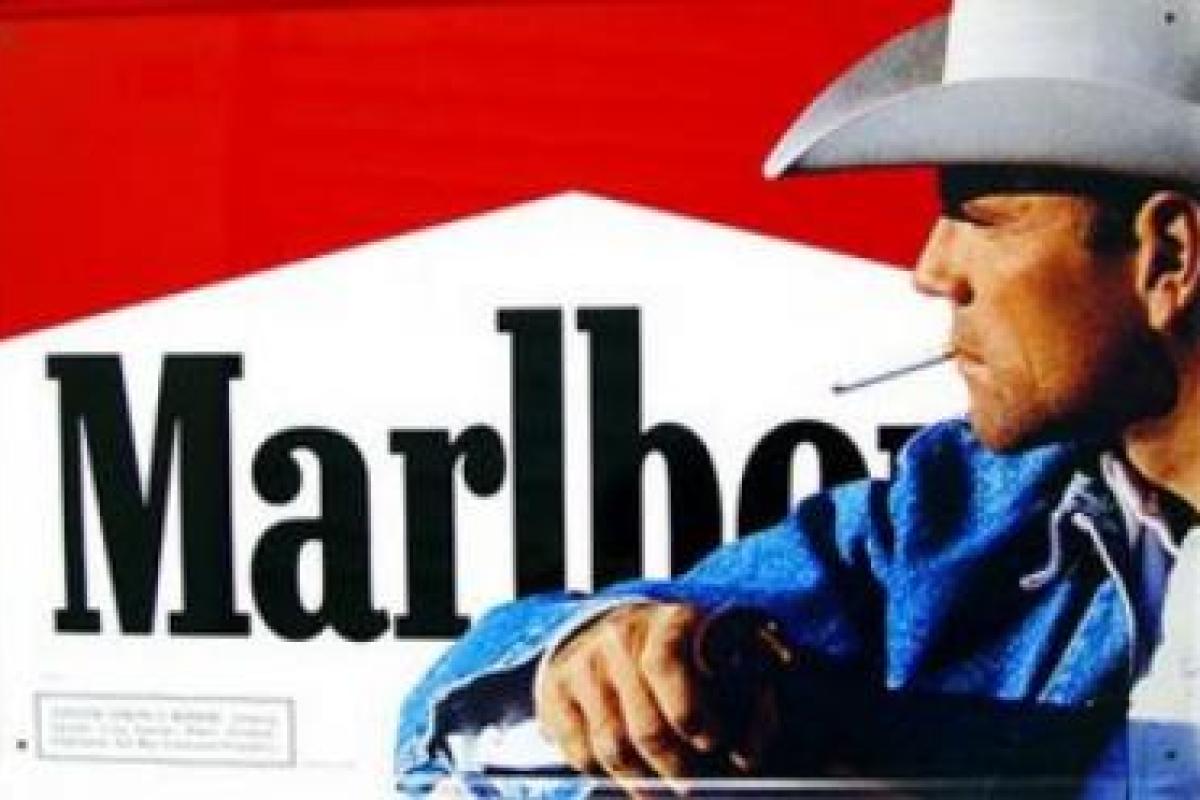In the 1920s one of the Philip Morris’ leading brands of cigarettes was marketed to women as being as 'mild as May'. Another slogan used was 'cherry tipped for your ruby lips' because the brand had a distinctive red band around the filter which helped hide any ungainly lipstick marks.
The ads featured stylish women posed in plush settings, often with a feminine hand reaching for a cigarette. The pack was stylish too, with flowing type on a white pack.
The brand was Marlborough.
The name could be traced back to the first Philip Morris factory in Great Marlborough Street in London. During World War II, however, sales of the brand declined. Starting in the early 1950s, scientific data about harmful effects of smoking began to emerge and perhaps surprisingly this prompted Philip Morris to consider whether it could do more with its Marlborough brand.
They recognised that like other tobacco companies they needed to shift their focus onto filtered brands, but if they were going to be successful they would need to overcome perceptions that filtered cigarettes, and especially brands like Marlborough, were cigarettes for women. The new Marlborough brand would have to be a far cry was the old one.
The first change Philip Morris made was the name – it was shortened and simplified – Marlboro.
Along with the 'ugh', out went the red band on the filter. Red was retained as part of a bold new geometric packaging design created by designer, Frank Gianninoto.
The biggest changes, however, came in the advertising, where Philip Morris turned to Leo Burnett to change a whole new image. The claims made in the new advertising they developed reflected the new positioning as a safer but still full flavoured option... for men.
'Man-sized taste of honest tobacco comes full through. Smooth-drawing filter feels right in your mouth. Works fine but doesn't get in the way. Modern Flip-top box keeps every cigarette firm and fresh until you smoke it.'
But perhaps the greatest change was in the imagery used in the advertising.
The striking new campaign was about as far away as you could get from the genteel saloons of the 1920s. The 'new Marlboro smoker as a lean, relaxed outdoorsman - a cattle rancher, a Navy officer, a flyer - whose tattooed wrist suggested a romantic past, a man who had once worked with his hands, who knew the score, who merited respect' reported Esquire magazine.
It was an image they felt projected 'virility without vulgarity, quality without snobbery'. It seemed America agreed with them; sales which had been $5 billion in 1955 rose to $20 billion by 1957, a 300% increase within two years.
In those first few years of the campaign different types of 'outdoorsmen' were shown and the responses to each were carefully monitored. The cowboy emerged as the clear favourite and the campaign soon focused on the contemplative cowboy enjoying his smoke in what was to become the familiar terrain of Marlboro County.
Read more brand stories from Giles Lury in our Library or on his blog The Prisoner and the Penguin.
